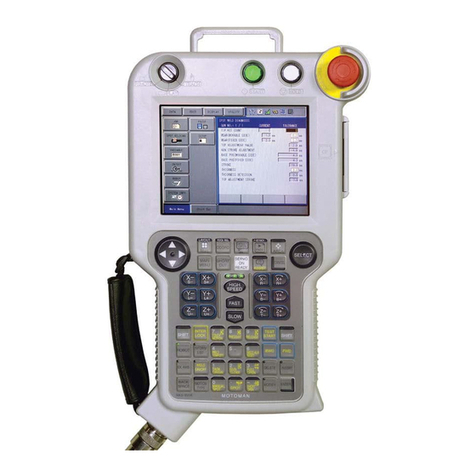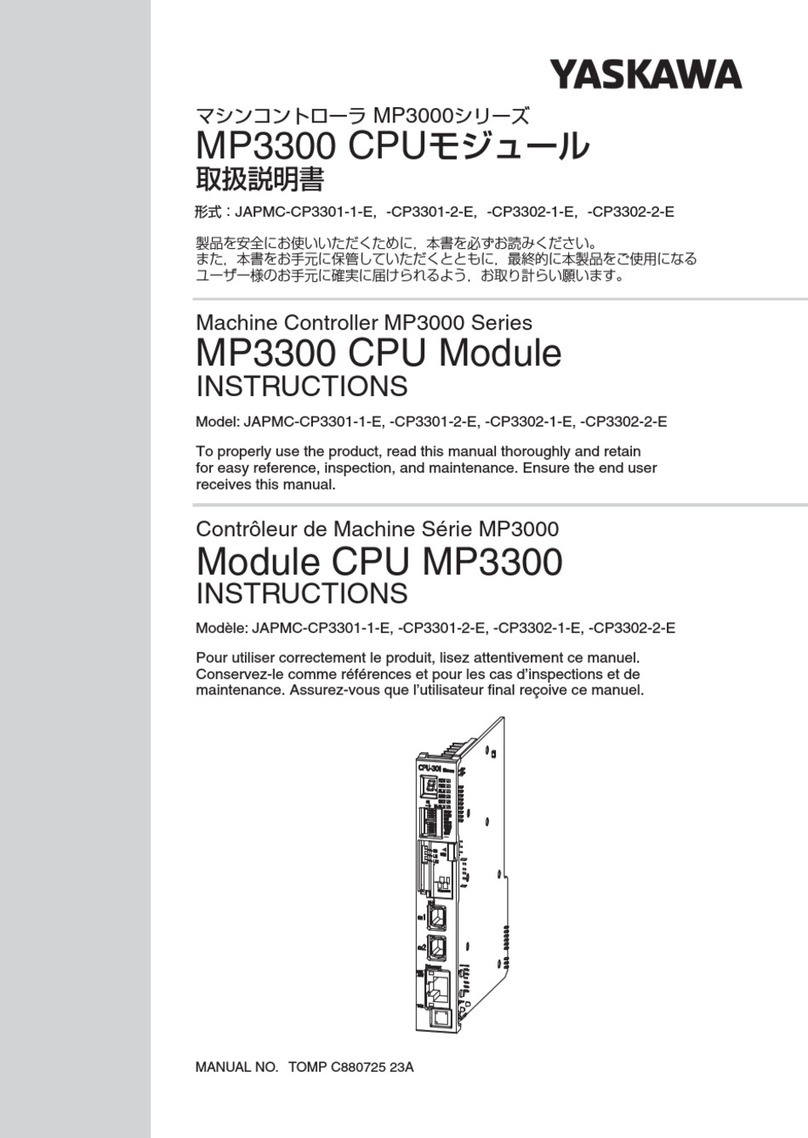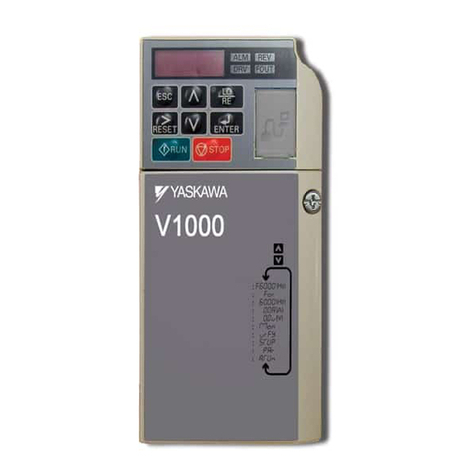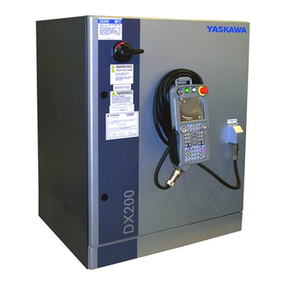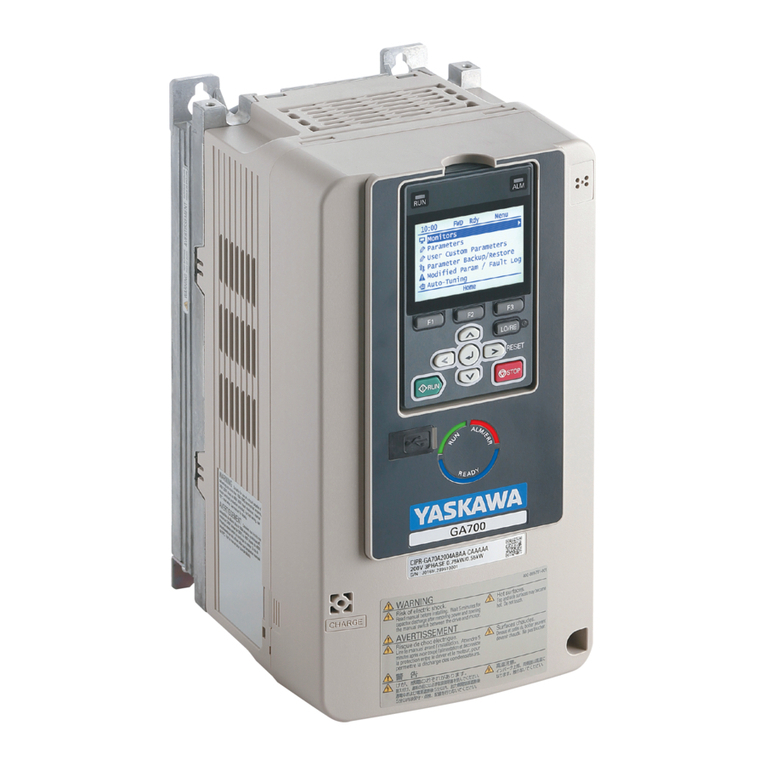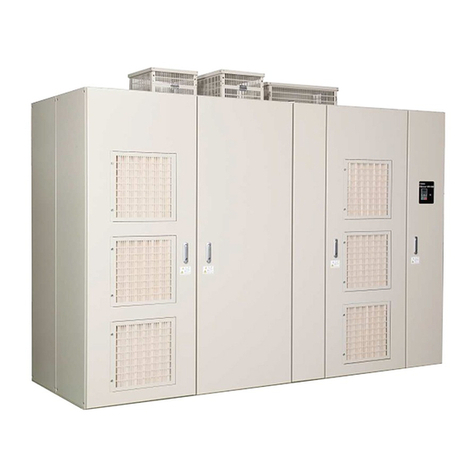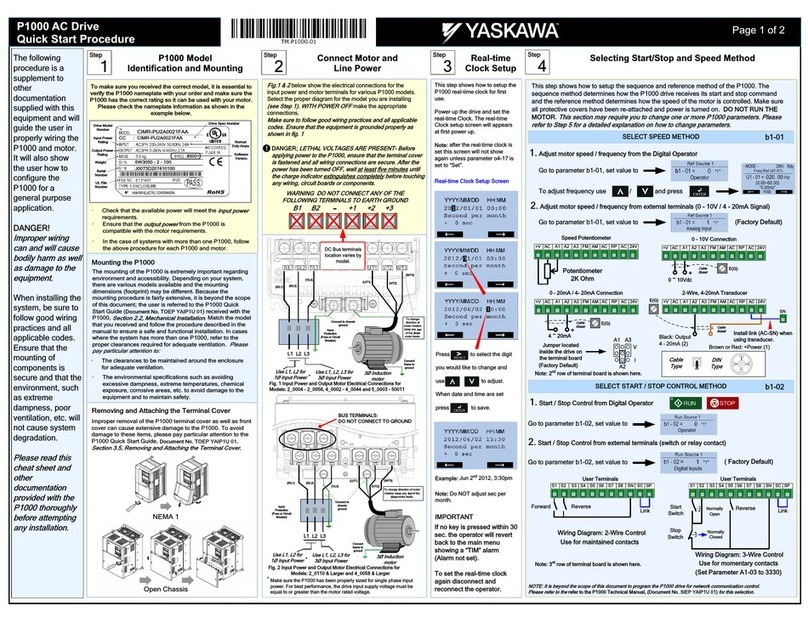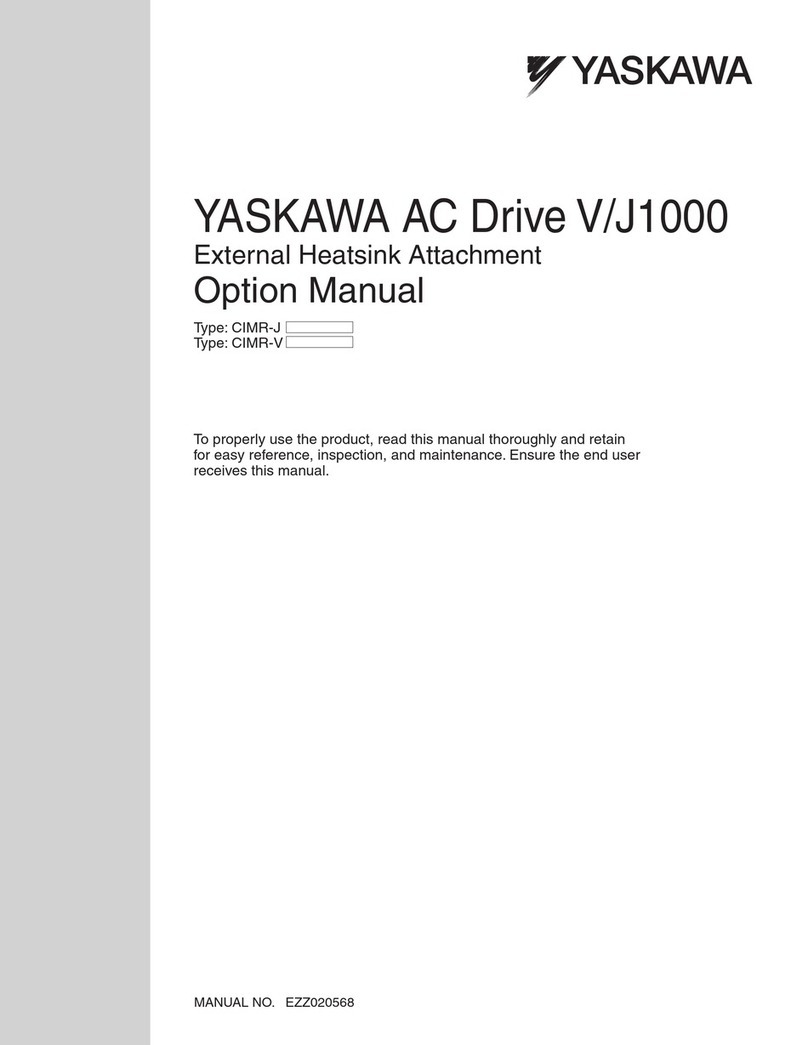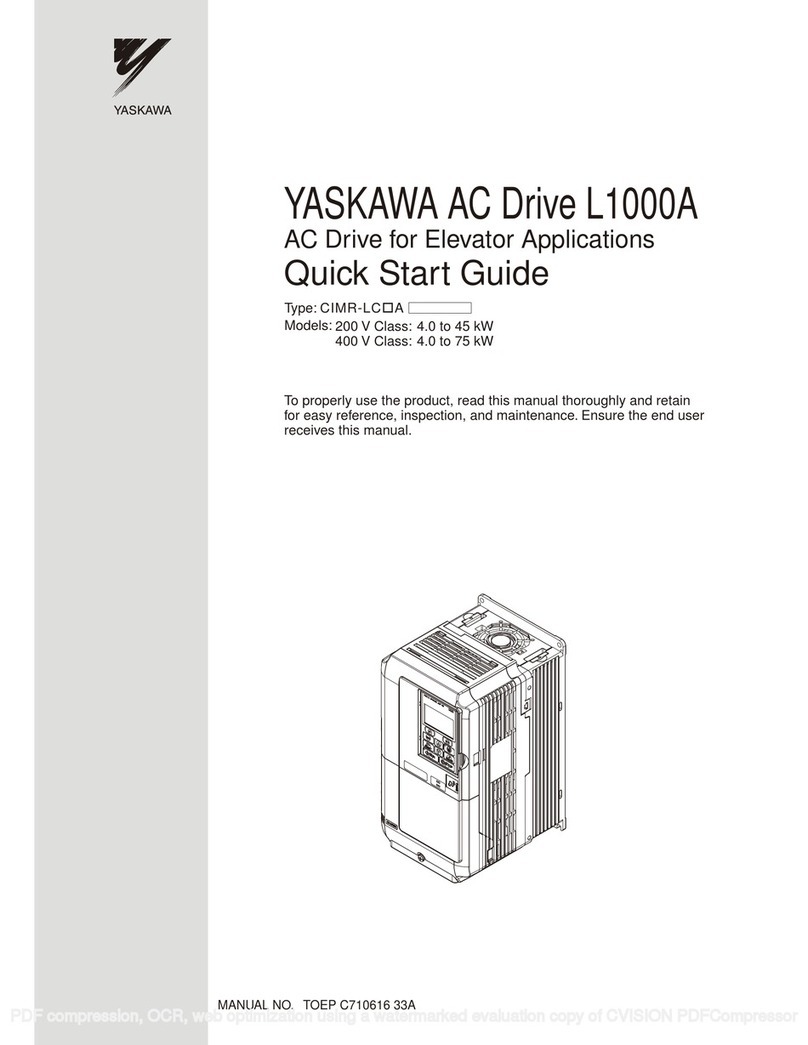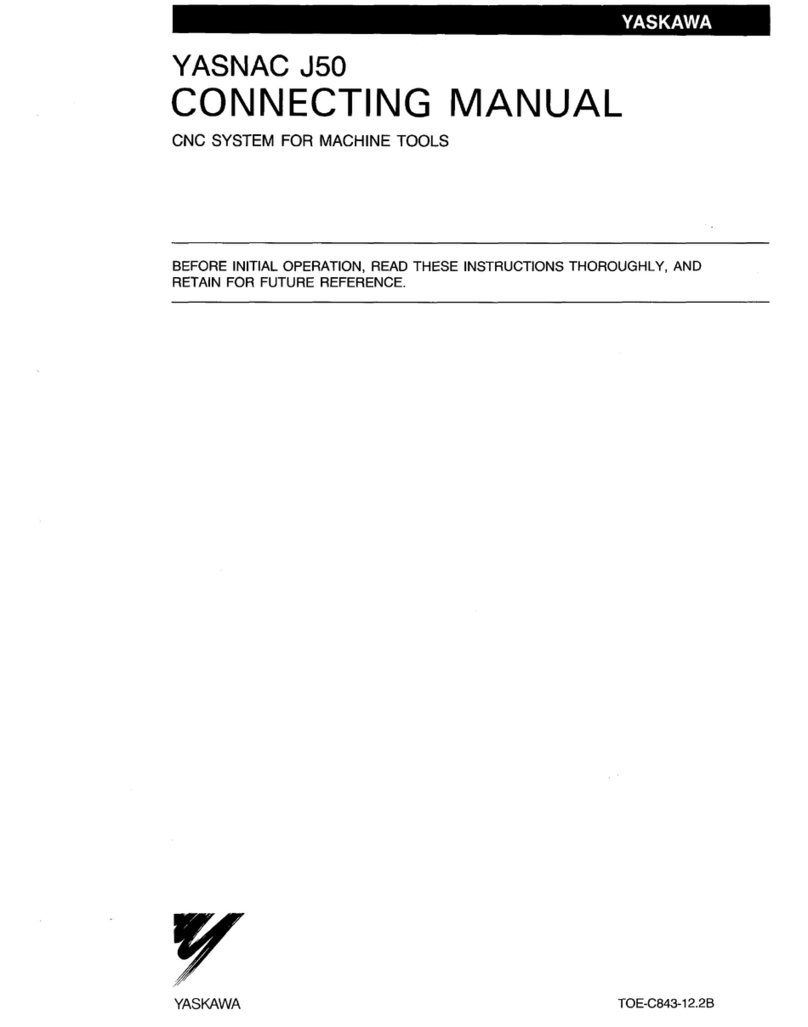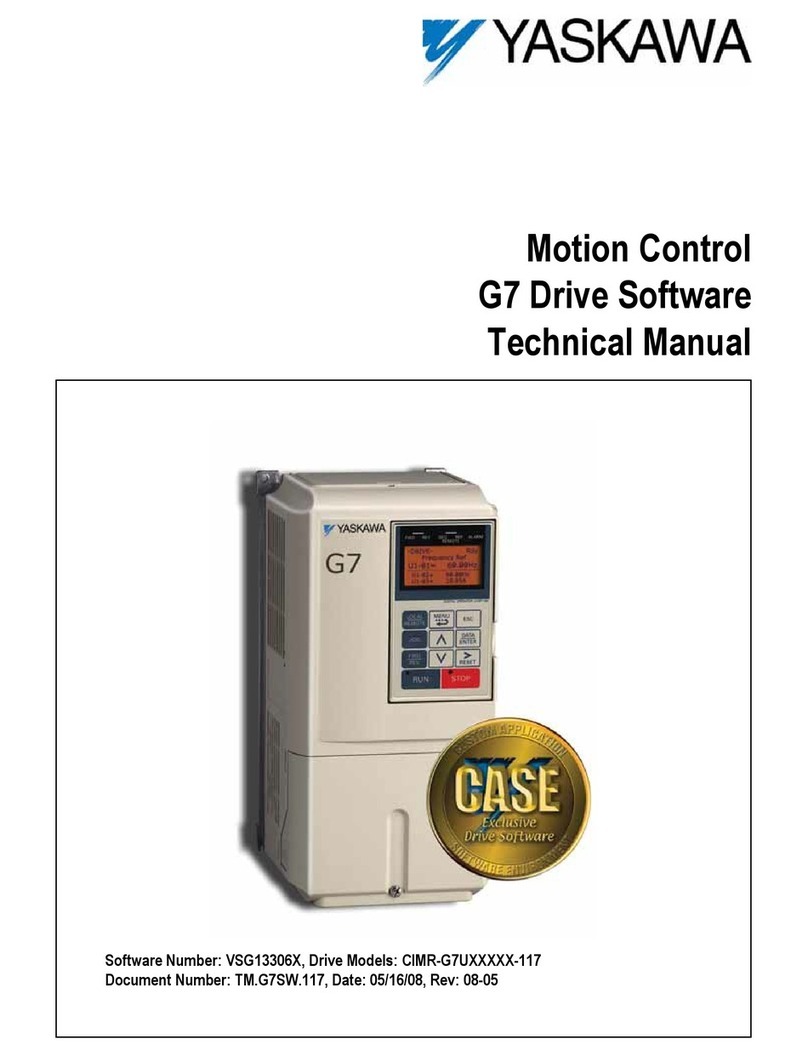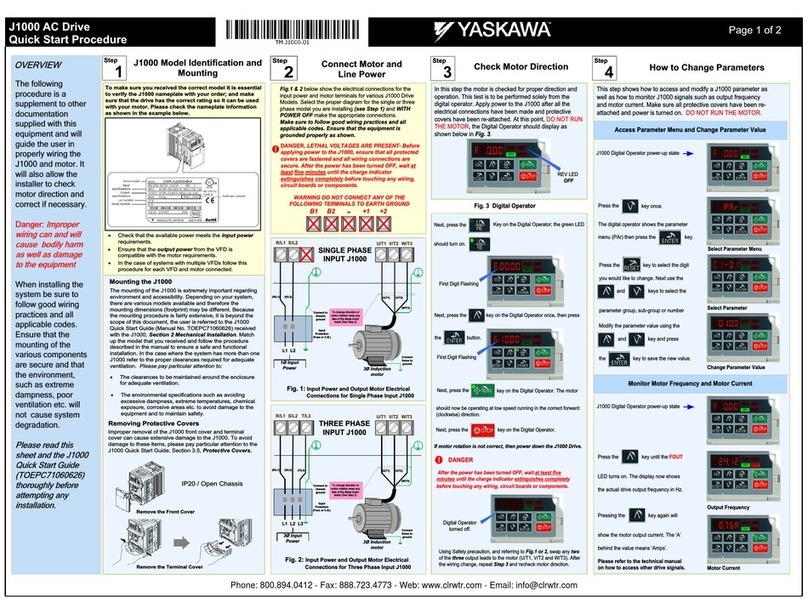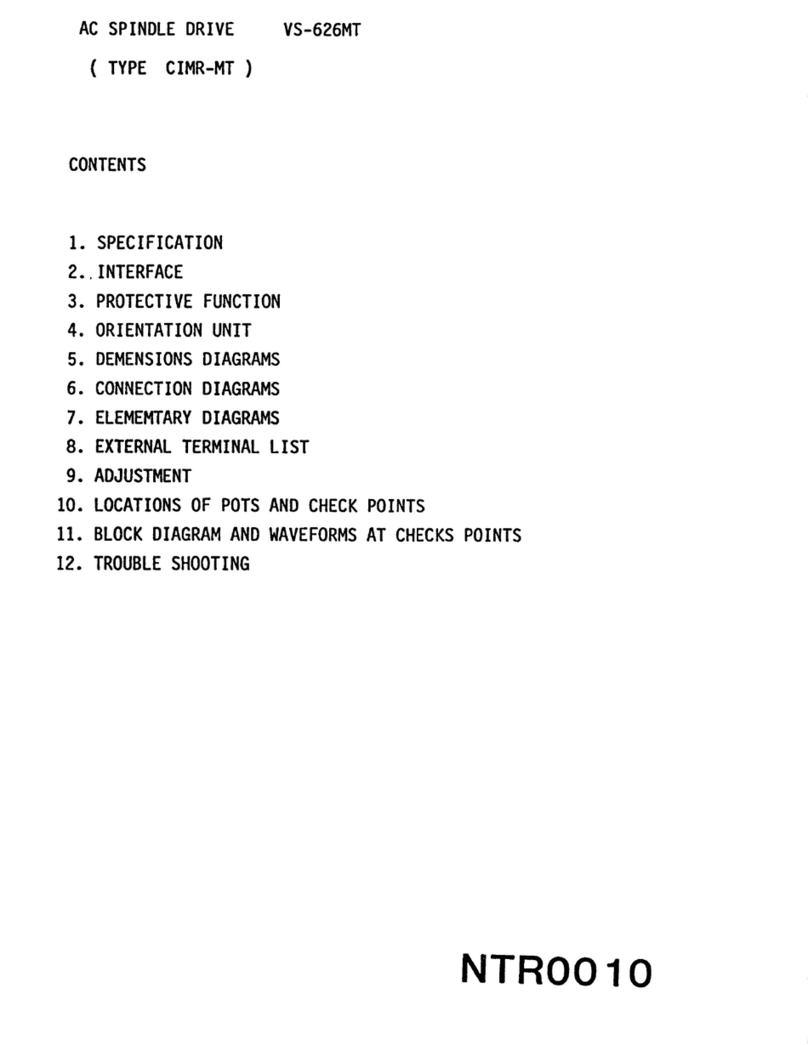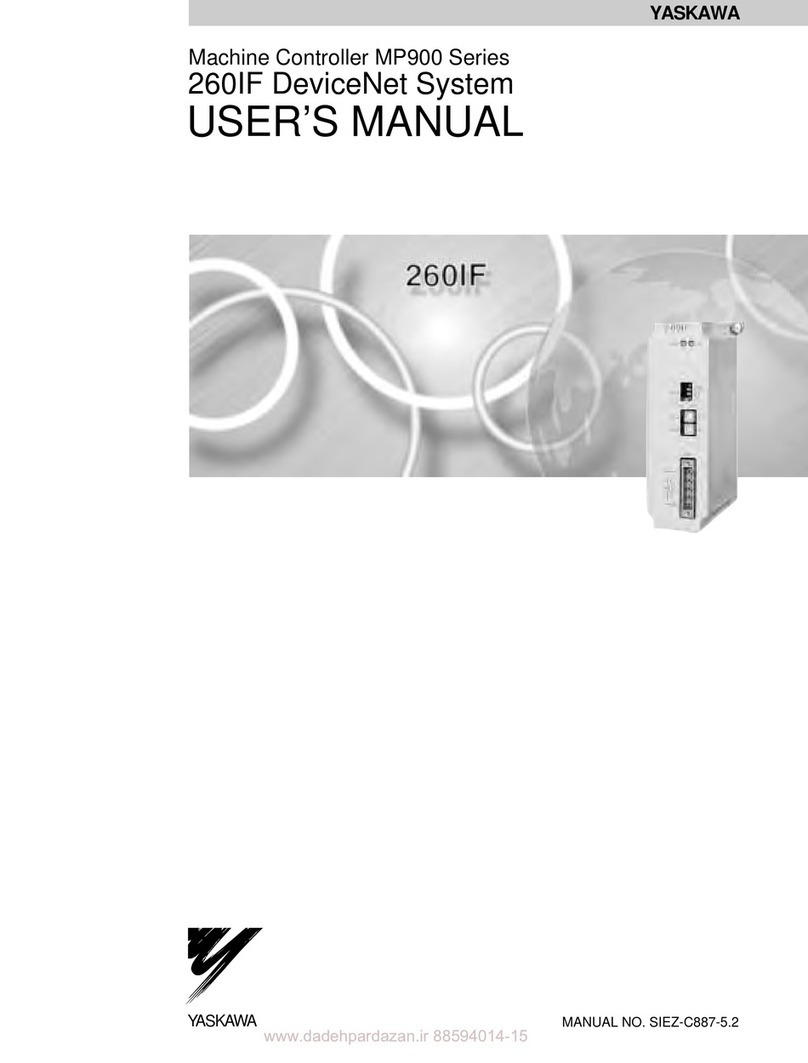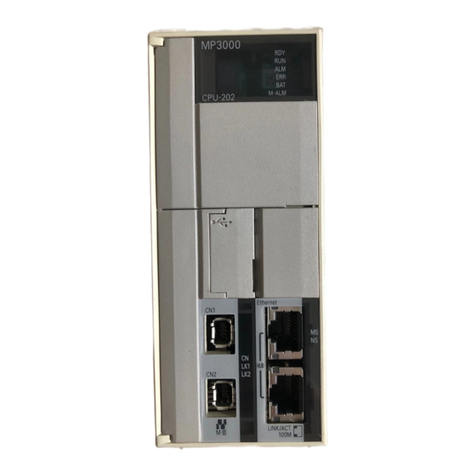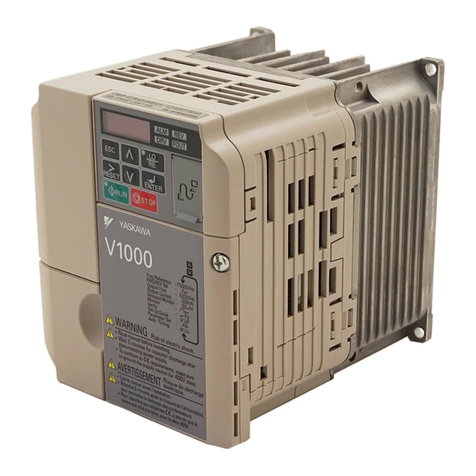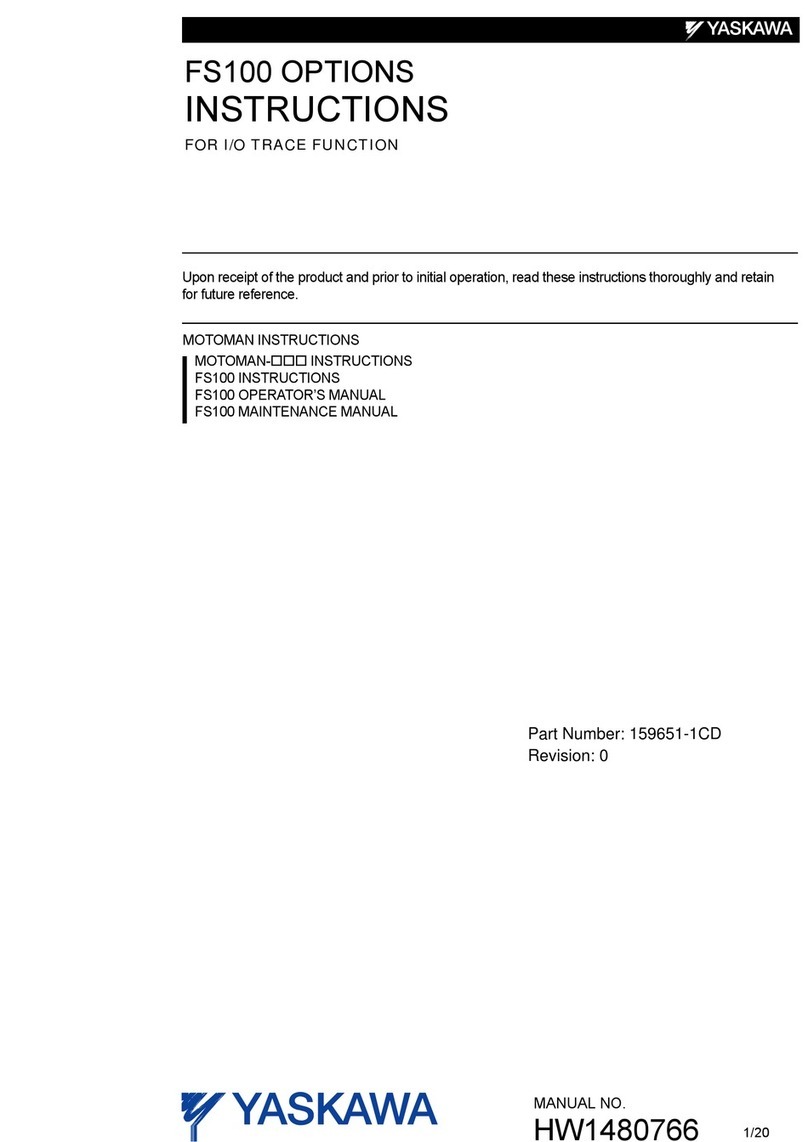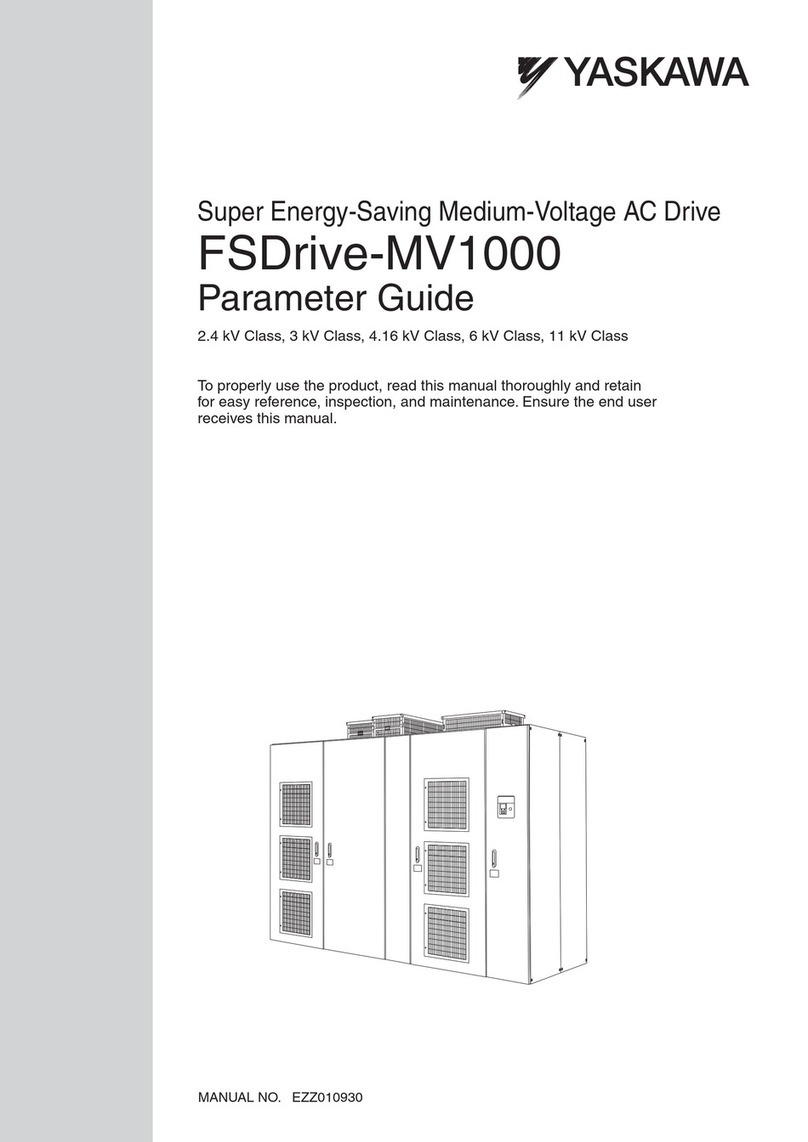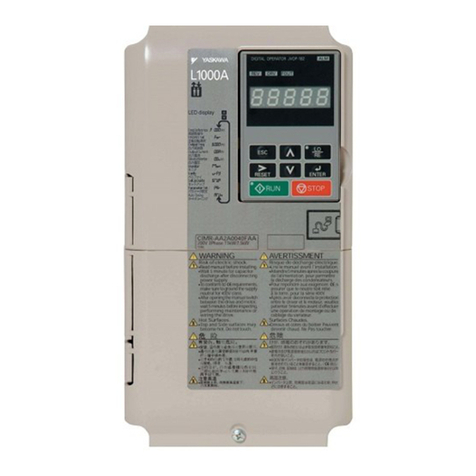
Manual
Chapter 2 Safety
page 6 Final
2.5 Installation Safety
Safe installation is essential for protection of people and equipment. The following suggestions are
intended to supplement, but not replace, existing federal, local, and state laws and regulations.
Additional safety measures for personnel and equipment may be required depending on system
installation, operation, and/or location. Installation tips are as follows:
• Be sure that only qualified personnel familiar with national codes, local codes, and
ANSI/RIA R15.06-1999 safety standards are permitted to install the equipment.
• Identify the work envelope of each robot with floor markings, signs, and barriers.
• Position all controllers outside the robot work envelope.
• Whenever possible, install safety fences to protect against unauthorized entry into the work
envelope.
• Eliminate areas where personnel might get trapped between a moving robot and other
equipment (pinch points).
• Provide sufficient room inside the workcell to permit safe teaching and maintenance
procedures.
2.6 Programming, Operation, and Maintenance Safety
All operators, programmers, plant and tooling engineers, maintenance personnel, supervisors, and
anyone working near the robot must become familiar with the operation of this equipment. Improper
operation can result in personal injury and/or damage to the equipment. Only trained personnel
familiar with the operation, manuals, electrical design, and equipment interconnections of this robot
should be permitted to program, operate, and maintain the system. All personnel involved with the
operation of the equipment must understand potential dangers of operation.
• Inspect the robot and work envelope to be sure no potentially hazardous conditions exist. Be
sure the area is clean and free of water, oil, debris, etc.
• Be sure that all safeguards are in place. Check all safety equipment for proper operation.
Repair or replace any non-functioning safety equipment immediately.
• Do not enter the robot cell while it is in automatic operation. Be sure that only the person
holding the programming pendant enters the workcell.
• Check the E-STOP button on the programming pendant for proper operation before
programming. The robot must be placed in Emergency Stop (E-STOP) mode whenever it is
not in use.
• Back up all programs and jobs onto suitable media before program changes are made. To
avoid loss of information, programs, or jobs, a backup must always be made before any
service procedures are done and before any changes are made to options, accessories, or
equipment.
